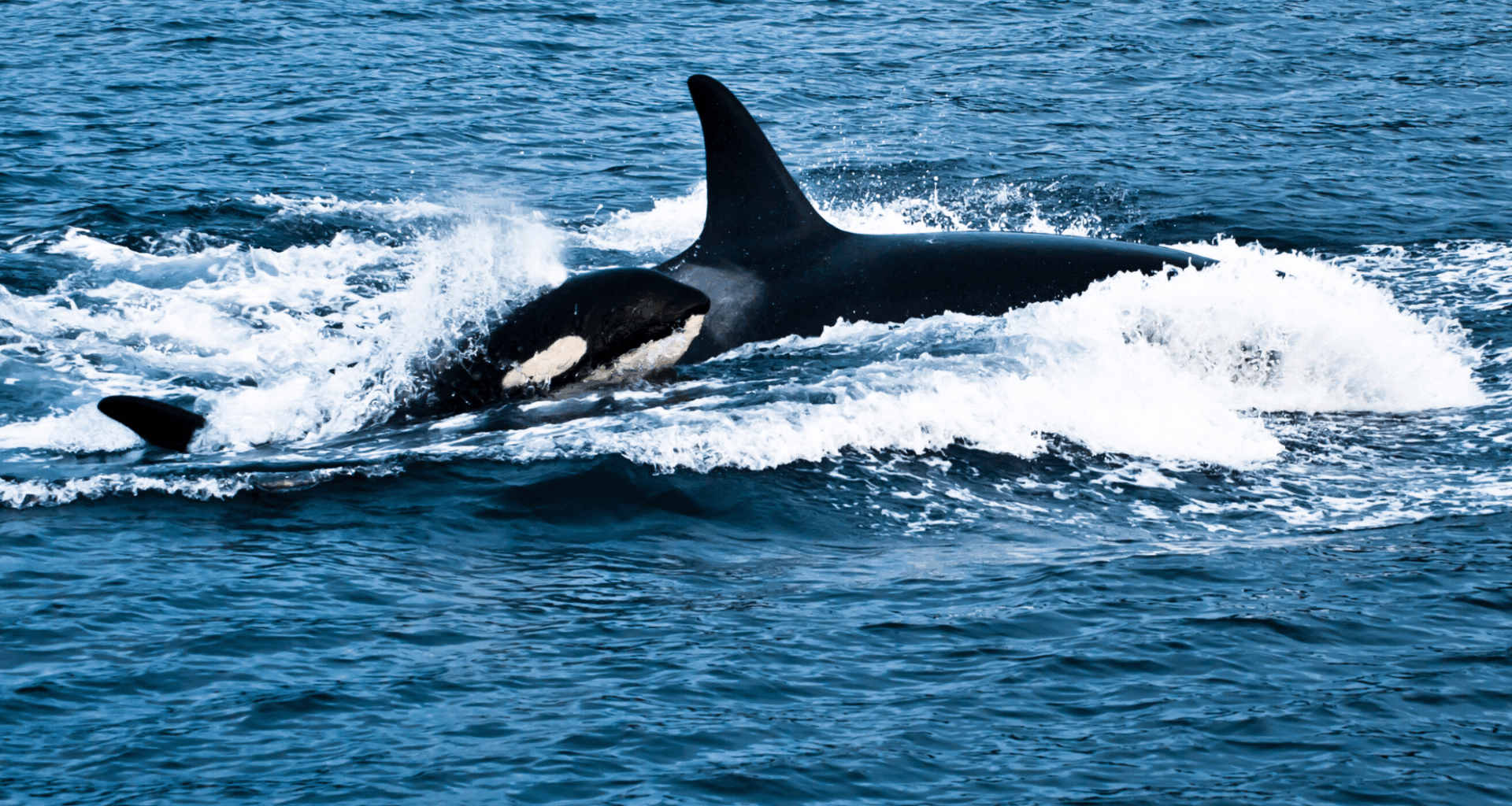In an unprecedented moment off the coast of Skjervøy, Norway, researchers captured the first-ever documented orca birth in the wild. The stunning footage, shared by Krisztina Balotay, a photographer and videographer at Orca Channel, reveals the dramatic and intimate first hour of a newborn orca’s life. The birth was not only a rare event, but it also unveiled the extraordinary care that orcas provide for their young. This groundbreaking discovery, reported by Live Science, offers new insights into orca behavior and survival strategies in the wild.
The Unexpected Orca Birth: A Rare and Historic Event
When a group of researchers set out on a whale-watching expedition in Skjervøy, Norway, they had no idea they were about to witness history. As they observed the orca pod from a boat, everything seemed typical—until the water around them suddenly turned crimson with blood. Krisztina Balotay, a photographer and videographer at Orca Channel, who was part of the team, described the moment in a Facebook post:
“We were floating calmly and watching the feeding, when all of a sudden, close to the boat, there was blood spilling and splashing everywhere.”
Initially puzzled by the blood, it soon became clear what was happening—an orca was giving birth right beside their boat.
It was an awe-inspiring and unexpected sight. Moments later, a small orca calf’s head popped up above the surface, marking the beginning of a new life. The team was left in astonishment as they watched this rare moment unfold. Despite initial uncertainty about the calf’s survival, they soon realized that the rest of the pod was closely involved in the birth, forming a protective circle around the newborn.
The Protective Circle: A Fascinating Orca Behavior
After the calf was born, the rest of the orca pod, consisting mostly of females and juveniles, immediately formed a protective circle around the newborn. This group behavior is critical to the survival of the calf. The orcas, almost instinctively, seemed to push the newborn toward the surface, helping it to breathe in the challenging waters of the Arctic Circle. “We observed them carrying the calf on their back and holding it above water for air,” Balotay noted, reflecting the remarkable teamwork displayed by the pod. The sight was both reassuring and alarming for the team on the boat—at first, they were unsure if the calf was alive. The efforts of the orcas, however, indicated that the calf was being supported in its fragile first moments.
It wasn’t until the researchers launched a drone to get a better view that they could confirm the calf’s survival. In the first 15 minutes, the calf struggled to stay afloat, but it began to gain strength, buoyed by the pod’s continuous support. The footage from the drone not only provided vital information about the calf’s early moments but also revealed the complexity of orca social dynamics and how deeply embedded care for the young is in their culture.
NKW-591: The Experienced Mother Behind the Newborn
As researchers observed the birth, they identified the mother of the newborn calf as NKW-591, a female orca known to the team since 2013. She is a seasoned mother, having already raised multiple offspring. “The mother was identified as NKW-591, a known female first identified in 2013,” the Norwegian Orca Survey representatives shared. Her experience as a mother played a critical role in ensuring the calf’s survival, particularly during the first moments after birth, which are often perilous for newborns.
NKW-591’s nurturing behavior exemplifies the complex familial structures within orca pods, where older females often take on the role of caregivers for younger members. In fact, orcas live in matrilineal groups, where knowledge about raising offspring and navigating the challenges of life in the ocean is passed down through generations. This birth event provided invaluable data on the survival strategies of orca calves, something that has been a core focus of research for the Norwegian Orca Survey.

